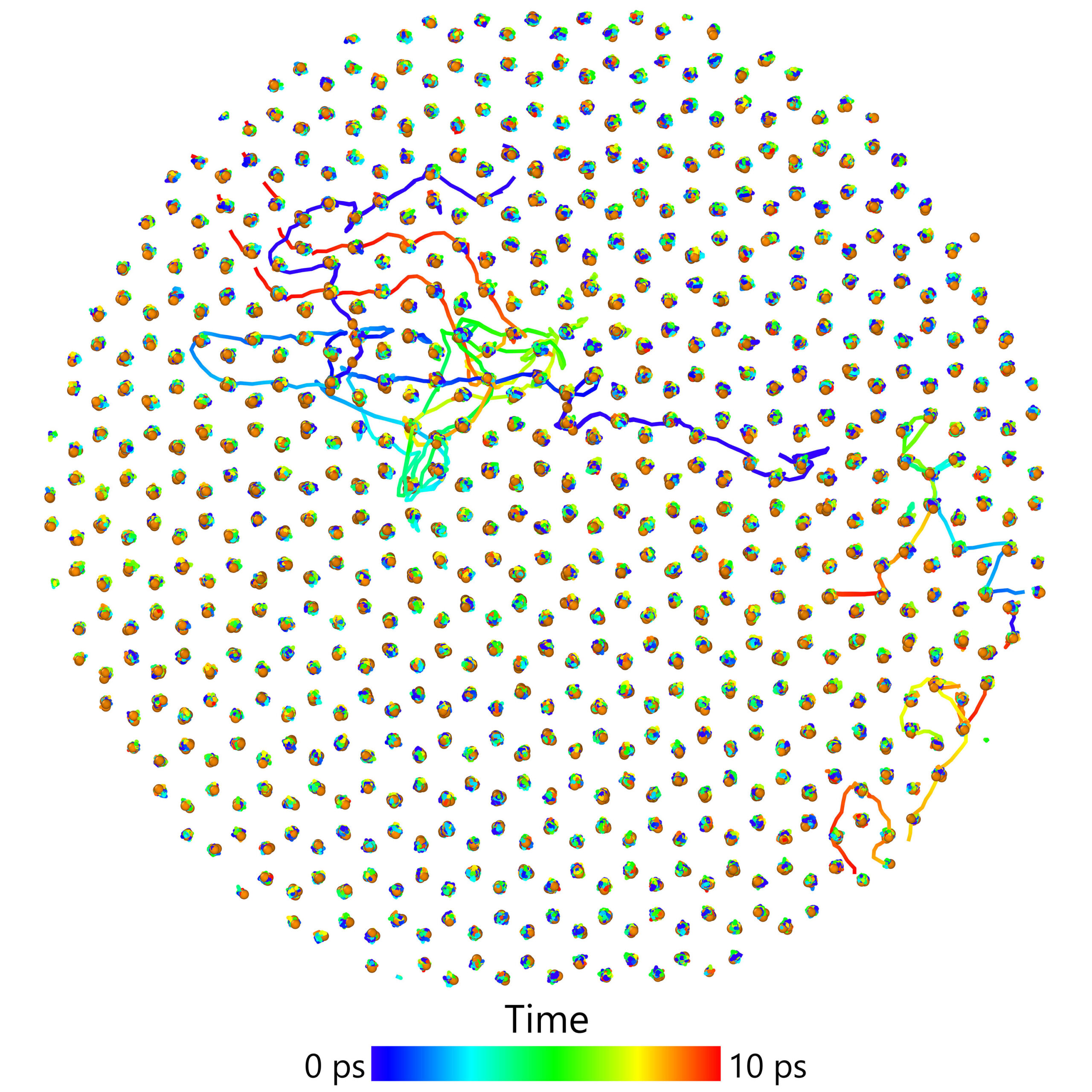2023-10-03 テキサス大学オースチン校(UT Austin)

A model of iron atoms on the move in Earth’s inner core. Credit: Youjun Zhang et al.
◆実験では、内核の高温と高圧を模倣し、鉄原子の挙動をモデル化するためにAIアルゴリズムを使用し、内核内の原子が六角形構造を保ちながら移動することを示しました。この動きが地震学的な測定結果と一致し、内核が柔らかく、剪断力に弱い理由を説明できる可能性があります。
<関連情報>
- https://news.utexas.edu/2023/10/03/iron-atoms-discovered-on-the-move-in-earths-solid-inner-core/
- https://www.pnas.org/doi/10.1073/pnas.2309952120
地球内核条件下でhcp-Feの集団運動が見られる Collective motion in hcp-Fe at Earth’s inner core conditions
Youjun Zhang Yong Wang, Yuqian Huang, Junjie Wang, Zhixin Liang, Long Hao, Zhipeng Gao, Jun Li, Qiang Wu, Hong Zhang, Yun Liu, Jian Sun and Jung-Fu Lin
Proceedings of the National Academy of Sciences Published:October 2, 2023
DOI:https://doi.org/10.1073/pnas.2309952120
Significance
Earth’s solid inner core exhibits intriguing characteristics such as an exceptionally low shear-wave velocity and an ultrahigh Poisson’s ratio. In this study, we have used high pressure–temperature experiments and machine learning calculations to examine the dynamics and sound velocities of hcp-Fe (hexagonal close-packed iron) at the inner core conditions. Our research reveals a drastic reduction in shear wave velocity when hcp-Fe approaches the melting point. Our advanced calculations show that iron atoms display collective motion with fast diffusion in the premelting regime, leading to the ultralow shear modulus and ultrahigh Poisson’s ratio. These results are consistent with seismic observations and geodynamics of the inner core, demonstrating that collective motion in hcp-Fe softens Earth’s solid inner core.
Abstract
Earth’s inner core is predominantly composed of solid iron (Fe) and displays intriguing properties such as strong shear softening and an ultrahigh Poisson’s ratio. Insofar, physical mechanisms to explain these features coherently remain highly debated. Here, we have studied longitudinal and shear wave velocities of hcp-Fe (hexagonal close-packed iron) at relevant pressure–temperature conditions of the inner core using in situ shock experiments and machine learning molecular dynamics (MLMD) simulations. Our results demonstrate that the shear wave velocity of hcp-Fe along the Hugoniot in the premelting condition, defined as T/Tm (Tm: melting temperature of iron) above 0.96, is significantly reduced by ~30%, while Poisson’s ratio jumps to approximately 0.44. MLMD simulations at 230 to 330 GPa indicate that collective motion with fast diffusive atomic migration occurs in premelting hcp-Fe primarily along [100] or [010] crystallographic direction, contributing to its elastic softening and enhanced Poisson’s ratio. Our study reveals that hcp-Fe atoms can diffusively migrate to neighboring positions, forming open-loop and close-loop clusters in the inner core conditions. Hcp-Fe with collective motion at the inner core conditions is thus not an ideal solid previously believed. The premelting hcp-Fe with collective motion behaves like an extremely soft solid with an ultralow shear modulus and an ultrahigh Poisson’s ratio that are consistent with seismic observations of the region. Our findings indicate that premelting hcp-Fe with fast diffusive motion represents the underlying physical mechanism to help explain the unique seismic and geodynamic features of the inner core.



